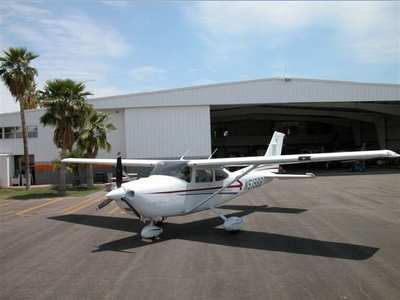Study Found Some Potential Safety Issues With Airbag Restraint
Systems
After adopting the safety study Airbag Performance in General
Aviation Restraint Systems on January 11 the NTSB is issuing six
safety recommendations to the FAA to address issues concerning
airbag restraint systems, and shoulder harnesses, as well as
capturing and recording crash dynamics information relating to
airbag deployment, and tracking aircraft safety equipment
installations. Information supporting these recommendations is
discussed in this letter and in the safety study.

In 2003, airbags were first certificated for pilot and copilot
seats on general aviation (GA) aircraft, and as of January 2011,
they have been installed in nearly 19,000 seats in over 9,000 GA
airplanes. Airbags in GA aircraft are installed in the lap belt or
shoulder harness portions of the restraint system and are designed
to deploy outward from the pilot or occupant. Sled tests conducted
under controlled conditions have suggested that aviation airbags
may increase survivability and reduce injury in actual aviation
accidents; however, no systematic evaluations had been conducted to
evaluate their efficacy in real-world scenarios. Therefore, in
2006, the NTSB initiated an exploratory case series study to assess
airbag performance in GA accidents.

Two goals of the study were to examine the effectiveness of
airbags in mitigating occupant injury in GA accidents, and to
identify any unintended consequences of airbag deployments.
During the course of its investigations, the study team
discovered two potential safety issues associated with the misuse
or incorrect adjustment of restraint systems. One issue involves
occupants reversing restraints in Cessna airplanes. After the
February 27, 2007, Cessna T182T accident in Athens, Texas,3 the
accident pilot stated that at the beginning of the flight, the left
front seat passenger had attempted to use the restraint for the
right seat. In the Cessna T182T, both of the front seatbelts hang
from the ceiling between the two seats. The pilot, who was also a
certified flight instructor, noted that there had been other
occasions when his students had inadvertently used the wrong
restraint in either the Cessna 172 or Cessna 182.
The NTSB concludes that the 3-point restraint systems in certain
Cessna airplanes can be reversed in such a way that the airbag and
restraint systems are not used as designed and certified. For
example, if a left-seated occupant fastened the right seat shoulder
harness to his or her outboard buckle, the airbag system in the
unused restraint would be active while the airbag in the buckled
restraint would be inactive.
The NTSB is recommending that the FAA require Cessna Aircraft
Company and other manufacturers whose restraint system designs
permit an occupant to use an inactive airbag restraint system not
intended for use in his or her seat to modify their restraint
system designs to eliminate that possibility, and require them to
modify restraint systems in existing airplanes to eliminate the
possibility of misuse.

Cessna 182T File Photo
They further recommend revision of the guidance and
certification standards concerning restraint systems to recognize
and prevent potential misuse scenarios, including those documented
in this safety study, and modification of the special conditions
for the installation of inflatable restraints on general aviation
airplanes (at Federal Register, vol. 73, no. 217 [November 7,
2008], p. 66163) to provide specific guidance to manufacturers as
to how they should demonstrate that the protection is effective for
occupants that range from the 5th percentile female to the 95th
percentile male.
Other recommendations include requiring the retrofitting of
shoulder harnesses on all general aviation airplanes that are not
currently equipped with such restraints in accordance with Advisory
Circular (AC) 21-34, issued June 4, 1993, evaluation of the
potential safety benefits and feasibility of requiring
airbag-equipped aircraft to have the capability to capture and
record, at a minimum, data concerning crash dynamics and airbag
deployment criteria that can be reviewedafter a crash to determine
whether the system performed as designed, and development of a
system to track individual aircraft information about aircraft
safety equipment, such as restraint systems, airbags, aircraft
parachutes, and other specific aircraft equipment, designed to
improve crash outcomes.
 NTSB Prelim: Piper PA-23
NTSB Prelim: Piper PA-23 Classic Aero-TV: One Mans Vietnam
Classic Aero-TV: One Mans Vietnam NTSB Final Report: Capella Aircraft Corp FW1C50
NTSB Final Report: Capella Aircraft Corp FW1C50 Classic Aero-TV: Timber Tiger Touts Curtiss Jenny Replicas
Classic Aero-TV: Timber Tiger Touts Curtiss Jenny Replicas ANN's Daily Aero-Term (07.04.25): Performance-Based Navigation (PBN) [ICAO]
ANN's Daily Aero-Term (07.04.25): Performance-Based Navigation (PBN) [ICAO]





